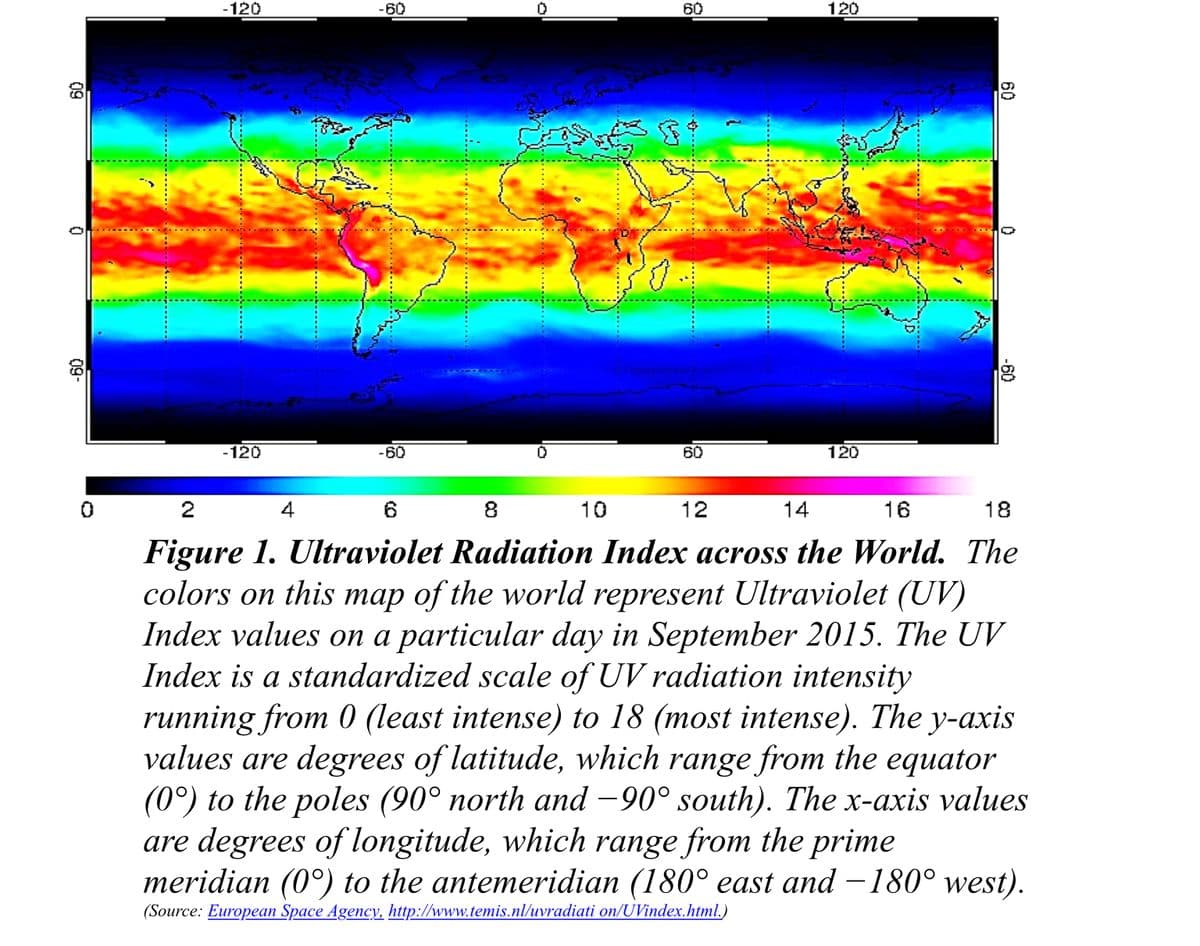Can you please help me with this lab question . Examine Figure 1 above and answer Questions 1–6. 1. Describe the relationship between the UV Index (the colored bar in Figure 1) and latitude (y-axis). 2. How do you explain the relationship between the UV Index and latitude? (In other words, why does UV intensity change with latitude?) 3. Find your approximate location on the map. What is the primary UV Index value of your state on this particular day in September? _________ 4. Look at the regions that receive the most-intense UV (light pink). Site a specific piece of evidence from the map that a factor other than latitude was contributing to UV intensity on this day. 5. In the film, Dr. Jablonski explains that melanin, located in the top layer of human skin, absorbs UV radiation, protecting cells from the damaging effects of UV. Genetics determines the type of melanin (i.e., brown/black eumelanin or red/brown pheomelanin) and the amount of melanin present in an individual’s cells. Based on this information, write a hypothesis for where in the world you would expect to find human populations with darker or lighter skin pigmentation (i.e., different amounts of melanin). 6. Explain how you could test this hypothesis.
Can you please help me with this lab question
3. Find your approximate location on the map. What is the primary UV Index value of your state on this particular day in September? _________
5. In the film, Dr. Jablonski explains that melanin, located in the top layer of human skin, absorbs UV radiation, protecting cells from the damaging effects of UV. Genetics determines the type of melanin (i.e., brown/black eumelanin or red/brown pheomelanin) and the amount of melanin present in an individual’s cells. Based on this information, write a hypothesis for where in the world you would expect to find human populations with darker or lighter skin pigmentation (i.e., different amounts of melanin).
6. Explain how you could test this hypothesis.

Trending now
This is a popular solution!
Step by step
Solved in 2 steps









